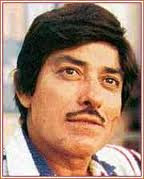Bollywood Old Hero Jaani Raaj Kumar
To revisit Kamal Amrohi’s Pakeezah today is to step into the twilight world when India was traditional even in its approach to modernity. When courtesy and wisdom were considered as important to a civilised society as appeara nces and grooming. And when commercial Hindi cinema looked society in the face to point out its flaws, yet laced the statement with a sad sweetness, a searing beauty.
No gun wielding angry young men. They were demure gentlemen with pencil moustaches who quoted shayari even as they defied the unjust mores they were born into. It was a time of subtlety, when tawaif was translated as ‘courtesan’ and not as ‘sex worker’. When a girl needed supreme courage just to look her lover in the face!
This is a film for romantics. Take the scene when Saheb Jan (Meena Kumari) chances upon the very tent of her mysterious lover, the forest officer (Raaj Kumar), and he walks in on her lying on his camp cot. She doesn’t dare open her eyes. Such delicacy is unheard of today, and looked down upon too. Today’s young people would likely find such hesitation corny and retrograde, but then, they need not be bothered to watch a film that was conceptualised in 1958 — though 14 years passed before it actually reached theatres.
The very situation in which she ends up in his forest camp might be considered made for Bollywood. But even the diehard unromantic would disagree with the premise that when a strong attraction is at work, circumstances work themselves out such that the attracting poles keep finding reason to beam at each other.
When Pakeezah came out, it created waves for many reasons. Not least was the tragic death of Meena Kumari before its release. But it was not merely pathos or gossip value that powered the film’s popularity.
The evergreen songs that even today give the best of film numbers a run for their money, thanks to music by Naushad and Ghulam Mohammed, the stunning choreography (Lachhu Maharaj and Gauri Shanker) the art work – N.B. Kulkarni won the Filmfare Award for Best Art Direction, and set decorator S.D. Najaf who appeared in the credits certainly deserves mention – and the detailed camera work (director of photography was Joseph Wirsching) combined to create an indelible aesthetic experience.
To revisit Kamal Amrohi’s Pakeezah today is to step into the twilight world when India was traditional even in its approach to modernity. When courtesy and wisdom were considered as important to a civilised society as appeara nces and grooming. And when commercial Hindi cinema looked society in the face to point out its flaws, yet laced the statement with a sad sweetness, a searing beauty.
No gun wielding angry young men. They were demure gentlemen with pencil moustaches who quoted shayari even as they defied the unjust mores they were born into. It was a time of subtlety, when tawaif was translated as ‘courtesan’ and not as ‘sex worker’. When a girl needed supreme courage just to look her lover in the face!
This is a film for romantics. Take the scene when Saheb Jan (Meena Kumari) chances upon the very tent of her mysterious lover, the forest officer (Raaj Kumar), and he walks in on her lying on his camp cot. She doesn’t dare open her eyes. Such delicacy is unheard of today, and looked down upon too. Today’s young people would likely find such hesitation corny and retrograde, but then, they need not be bothered to watch a film that was conceptualised in 1958 — though 14 years passed before it actually reached theatres.
The very situation in which she ends up in his forest camp might be considered made for Bollywood. But even the diehard unromantic would disagree with the premise that when a strong attraction is at work, circumstances work themselves out such that the attracting poles keep finding reason to beam at each other.
When Pakeezah came out, it created waves for many reasons. Not least was the tragic death of Meena Kumari before its release. But it was not merely pathos or gossip value that powered the film’s popularity.
The evergreen songs that even today give the best of film numbers a run for their money, thanks to music by Naushad and Ghulam Mohammed, the stunning choreography (Lachhu Maharaj and Gauri Shanker) the art work – N.B. Kulkarni won the Filmfare Award for Best Art Direction, and set decorator S.D. Najaf who appeared in the credits certainly deserves mention – and the detailed camera work (director of photography was Joseph Wirsching) combined to create an indelible aesthetic experience.




No comments:
Post a Comment